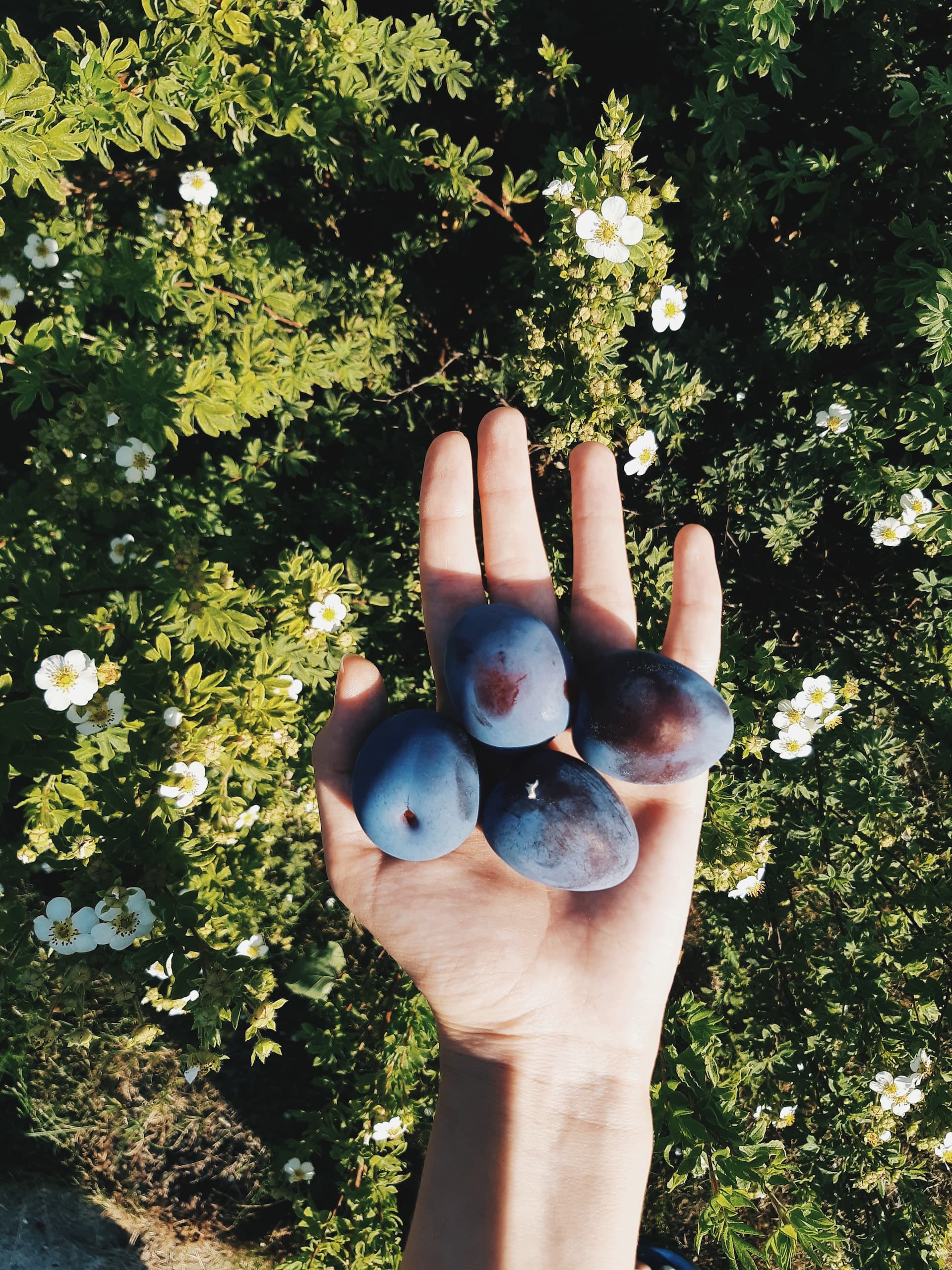The Kakadu plum has many health benefits, and is Australia’s most potent superfood and grows wild in abundance across the top end of Northern and Western Australia, with the highest recorded levels of vitamin C of any fruit in the world. The Kakadu plum is identified with several common names like Billy Goat Plum, Green Plum, Salty Plum, Wild Plum Murunga, Marnybi, Manmohan, Kullari Plum, and Gubinge. This flowering plant is from the family of Combretaceae.
Specifications
- Scientific name: Terminalia ferdinandiana
- Fruit color: Yellow to green
- Taste and smell: The taste of the fruit is tart, tastes like an English gooseberry or certain grape varieties, and has a subtle aroma of stewed apples and pears, with some cooked citrus.
- Part used: Mature ripe fruits or fruit pulp, freeze-dried fruits
- Seasonality: Fresh fruit is available from Jan-July, pending in the region.
- Growing conditions: A small to moderate-sized semi-deciduous tree, the Kakadu plum typically reaches 4–10 meters high. From seed, it generally takes less than five years for the tree to bear fruit. Suited to its natural hot and coastal environment, the density of Kakadu plum varies, with the highest concentration of trees measured near the coast.
Harvesting of Kakadu Plum
Like many wild-harvested native foods, weather conditions including drought, bushfires, and cyclones may impact the volume of fruit available, so production is highly variable from year to year. In Western Australia, the main harvest time is January, although some trees have multiple flowerings and can produce fruit up to July. In the Northern Territory harvest occurs in April.
Storage of Kakadu Plum
Kakadu plum needs to be frozen within 24 hours of harvest if it’s going to be used for its functional properties, to maintain its size and quality.
Nutritional Value of Kakadu plum
Kakadu plums are low in calories and high in dietary fiber, vitamin C, copper, and iron. They also contain smaller amounts of thiamine, riboflavin, magnesium, zinc, and calcium. The Kakadu Plum contains phytochemicals such as gallic and ellagic acids. Gallic acid has antibacterial, antiviral, and antifungal activities and shows anti-inflammatory, antitumor, anti-mutagenic, and anti-bronchi dilatory activities. The Kakadu plum is a nutritious fruit.
Vitamin C in Kakadu plum
Kakadu Plum is known for its vitamin C content. Kakadu plum is a single natural fruit with the highest content of vitamin C than any other fruit in the world, measuring up to 7000 mg/100g DW, which is 100 times the vitamin C content in oranges and 50 times the concentration found in oranges. Concentration means the number of ingredients or parts about the other ingredients or parts.
While unripe fruits have high concentrations of vitamin C, this diminishes as the fruit ripens. As ripe fruits age, the vitamin C continues to disappear. But in the end, we can point out that the Kakadu plum is one of the best vitamin C supplements, its medicinal uses are endless.
Factors that affect the content of Vitamin C in citrus fruits
Various factors depend on vitamin C contents like climate, especially temperature, affects vitamin C levels. Areas with cool nights produce citrus fruits with higher vitamin C levels. Hot tropical areas produce fruit with lower levels of vitamin C. Also, post-harvesting factors also impact vitamin C content. Conditions favorable to water loss after harvest result in a rapid loss of vitamin C, especially in leafy vegetables. The retention of vitamin C is lowered by bruising, and other mechanical injuries, and by excessive trimming.
7 Health benefits of Kakadu Plum
1. High Vitamin C Content
Kakadu plum is renowned for its exceptionally high vitamin C content. Vitamin C is a potent antioxidant that plays a crucial role in immune function, collagen synthesis, and skin health. The antioxidant properties of vitamin C contribute to protecting cells from oxidative stress.
2. Antioxidant and Anti-Inflammatory Properties
The fruit contains a variety of antioxidants, including phenolic compounds and flavonoids. These antioxidants help combat free radicals in the body, reducing oxidative stress and inflammation. Such properties may contribute to overall health and potentially lower the risk of chronic diseases.
3. Skin Health
The combination of vitamin C and other antioxidants in Kakadu plum makes it beneficial for skin health. Antioxidants help protect the skin from oxidative damage caused by UV radiation and environmental factors. The potential anti-aging effects may include reducing wrinkles and promoting a more youthful appearance.
4. Health Benefits of Kakadu Plum – it Supports Immune Function
Vitamin C is essential for a healthy immune system. The immune-boosting properties of Kakadu plum may contribute to overall immune function, helping the body defend against infections and illnesses.
5. Potential Anti-Cancer Properties
Some studies suggest that the bioactive compounds in Kakadu plum may have anti-cancer properties. Antioxidants play a role in neutralizing free radicals, which can contribute to the development of cancer. However, more research is needed to establish a clear link.
6. Rich in Nutrients
In addition to vitamin C, Kakadu plum contains other essential nutrients such as vitamin E, iron, zinc, and folate. These nutrients are crucial for various bodily functions, including energy metabolism, immune function, and red blood cell formation.
7. Supports Digestive Health
The fruit contains dietary fiber, which is beneficial for digestive health. Adequate fiber intake promotes regular bowel movements and supports a healthy gut microbiota.
Food Uses
The Kakadu plum can be freeze-dried and crushed into a concentrated powder to be used as a nutritional supplement in smoothies, yogurts, and puddings.
Commercial Applications
Kakadu Plum is a considerably useful ingredient in certain products that include: Skin & Hair Care Products Vitamin Supplements and beverages, capsules, or powders. Pharmacological products, Biochemical products, and more. Used in gourmet bush foods such as chutneys, jams, and pickles.
Method of preparing Kakadu plum powder
A process for producing a Kakadu plum powder has an increased amount of naturally occurring ascorbic acid and a high ORAC value. The process of preparing the extract includes the following: disintegrating Kakadu plum fruit; treating the disintegrated Kakadu plum material with enzymes to at least partially digest the material; juicing the Kakadu plum material and drying the juice to produce a powder. In a preferred embodiment, the Kakadu plum juice is further clarified with ultrafiltration and concentrated by performing reverse osmosis on the Kakadu plum juice. The resultant Kakadu plum powder has a natural ascorbic acid content of at least about 15% and a naturally occurring Oxygen Reduction Absorption Capacity value of at least 1500.
Conclusion
While Kakadu plum offers numerous potential health benefits, individual responses may vary. As with any supplement or food, it’s advisable to consume Kakadu plum as part of a balanced diet. Before incorporating it into your routine or using it for specific health purposes, consult with a healthcare professional, especially if you have underlying health conditions or are taking medications.
Disclaimer:
As a service to our readers, MVS Pharma GmbH publishing provides access to our library of archived content — in our blog. Please note the date of last review or update on all articles. No content on this site, should ever be used as a substitute for direct medical advice from your doctor or other qualified clinician.



